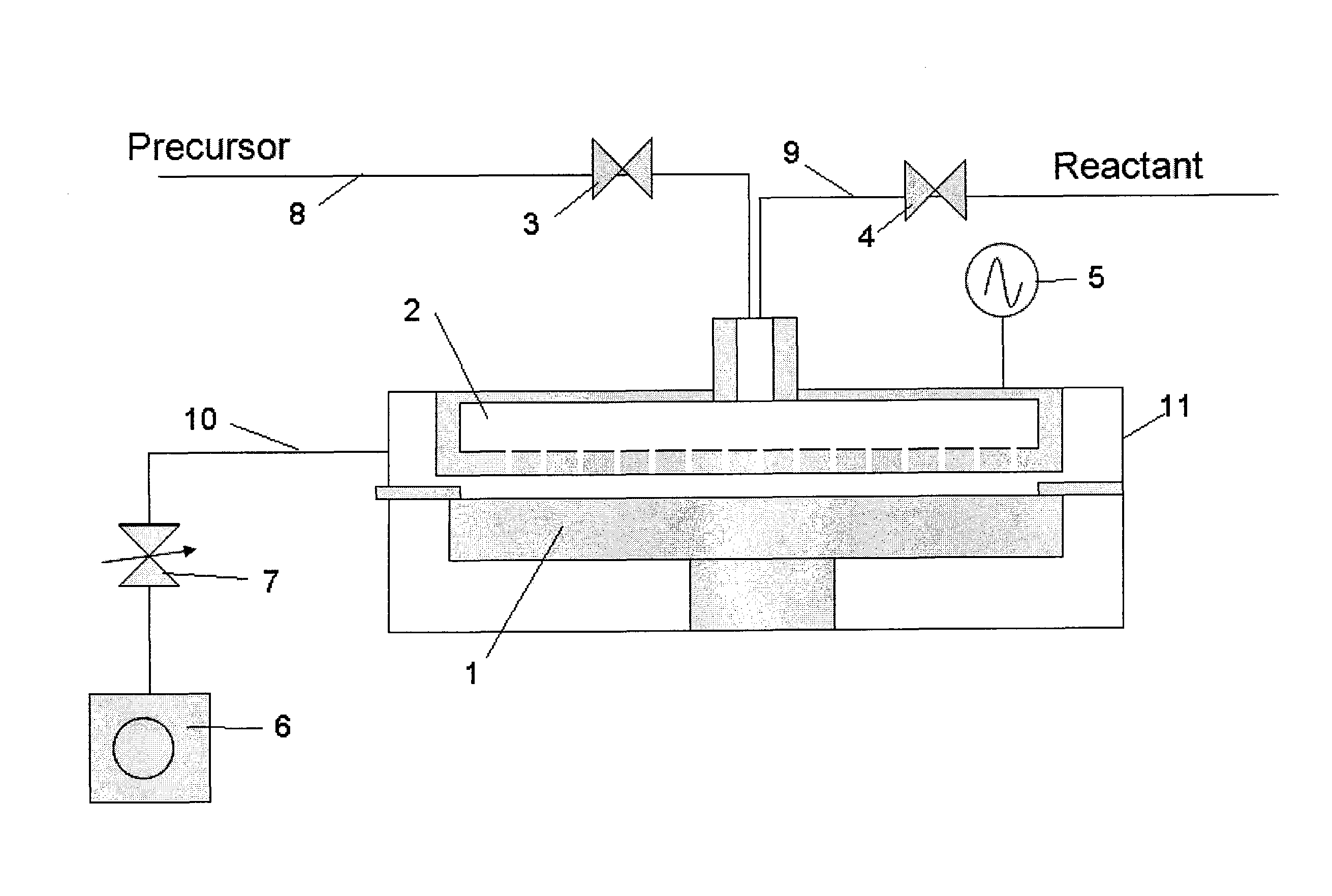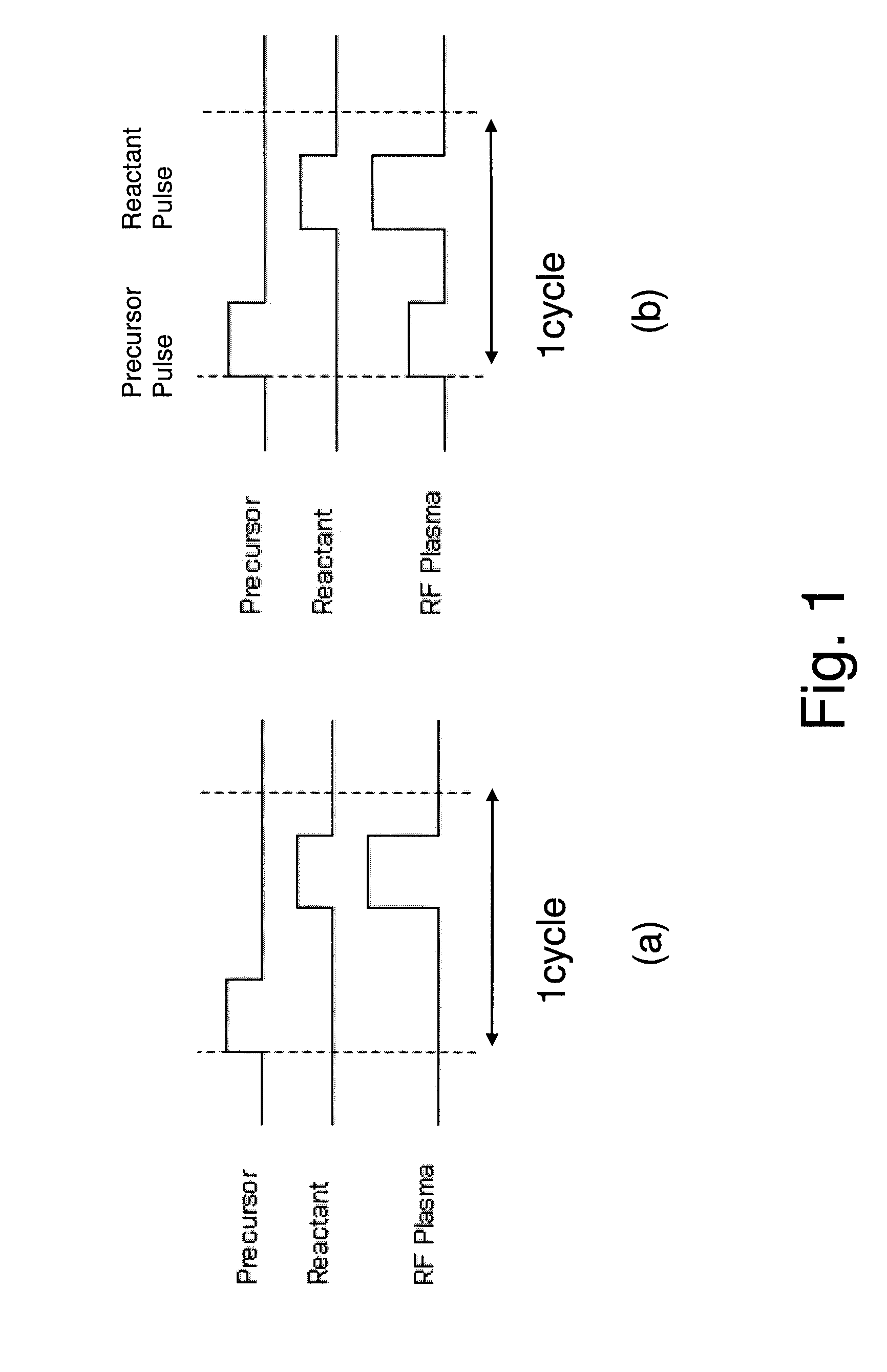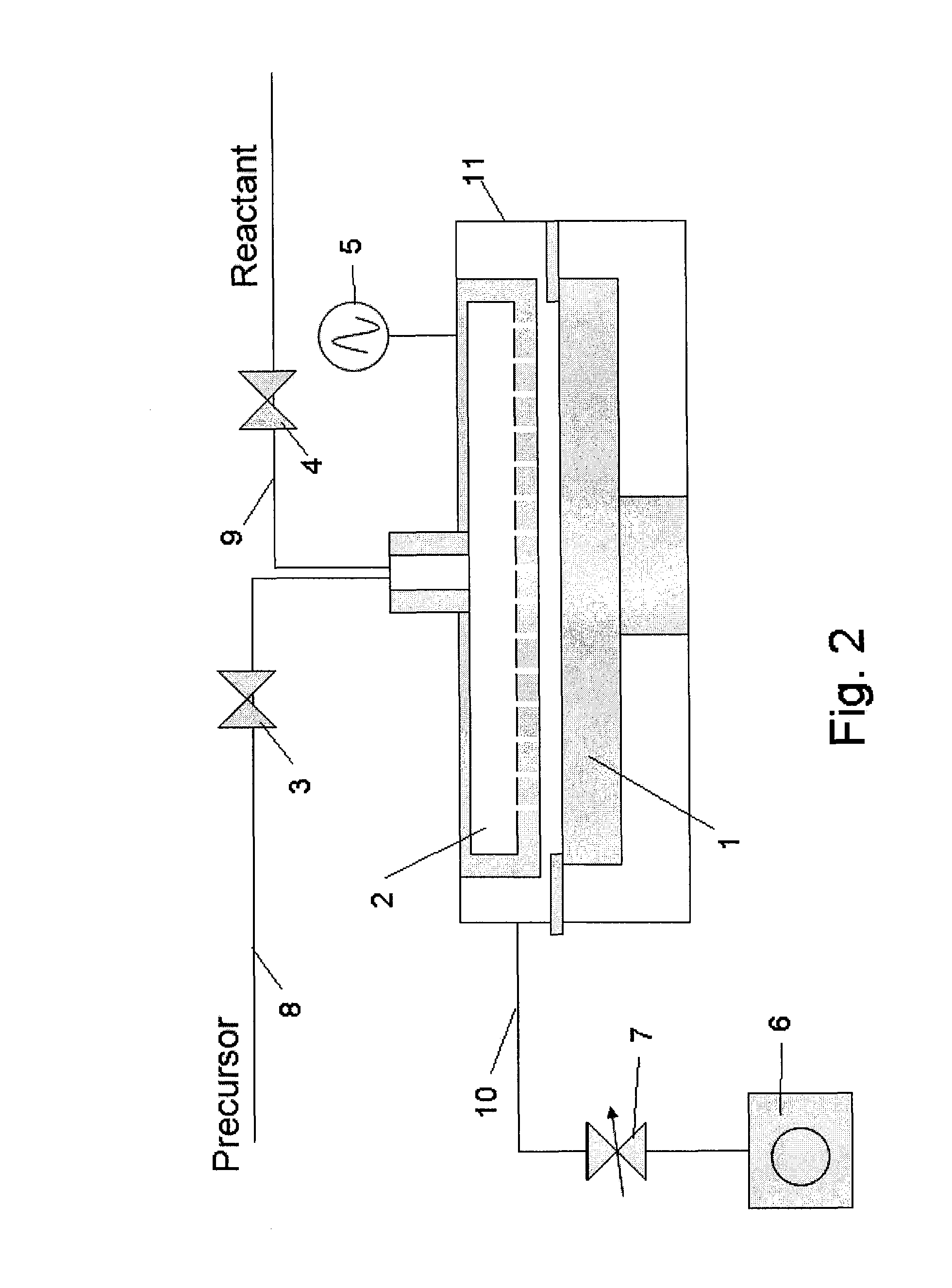Method of Forming Insulation Film by Modified PEALD
a technology of insulation film and peal, which is applied in the field of forming insulation film by plasma, can solve the problems of low film growth rate, difficult throughput, and poor coverage of ald, and achieve good coverage, high throughput, and increase the film growth rate
- Summary
- Abstract
- Description
- Claims
- Application Information
AI Technical Summary
Benefits of technology
Problems solved by technology
Method used
Image
Examples
example 1
[0077]In this example, the apparatus shown in the schematic diagram of FIG. 2 was used to form a film. This apparatus comprises a reactor 11 which can be retained in a vacuum state, susceptor 1 with heating mechanism used to hold a wafer on top, shower head 2 which provides a mechanism for supplying gas, RF application mechanism 5 that generates a plasma between the shower head and susceptor, material gas supply line 8 equipped with an open / close valve 3 connected to the shower head 2, reactant gas supply line 9 equipped with another open / close valve 4, exhaust line 10 used to exhaust the atmosphere inside the reactor 11, and vacuum pump 6 connected after the exhaust line via a pressure control valve 7, among others. Note that a purge gas line (not illustrated) is also connected to the shower head 2 just like the reactant gas supply line 9.
[0078]A Si wafer (300 mm in diameter) is heated to 400° C., and then HEAD Si2[NHC2H6]6 being the first material, N2 being the reactant gas, as we...
example 2
[0085]In accordance with Example 1, a SiO2 film was formed using BDEAS(bis(diethylamino)silane, SiH2[N(C2H5)2]2 as the first material and O2 (900 sccm, supplied for 1 sec) as the reactant gas. Therefore, when a conventional PEALD sequence (FIG. 1 (a)), was used, the film growth rate was 0.1 nm / cycle. On the other hand, use of a sequence (FIG. 1 (b)) similar to the one explained in Example 1, where RF was applied by 10 W in the material supply process and by 300 W in the reactant gas supply process boosted the film growth rate to 0.25 nm / cycle. A good coverage was also achieved (98%). However, application of 80 W in the aforementioned material supply process resulted in a film growth rate of 1 nm / cycle and the coverage also dropped (80%).
[0086]Further, the film growth rate increased to 5 nm / cycle when RF was applied by 20 W in the first material process while O2, being the reactant gas, was being supplied (by 300 sccm). However, this led to generation of particles also at the shower ...
example 3
[0087]In accordance with Example 1, a film was formed in the same manner as in Example 1, except that 3EMAS (tris(ethylmethylamino)silane, H2Si[N(C2H5)CH3]3 was used as the first material, 3EMAS was supplied simultaneously with the first reactant gas N2 (300 sccm), RF was applied by 30 W, and then RF was turned off and the atmosphere was purged, followed by supply of the second reactant gas H2 (500 sccm) and application of RF by 500 W. As a result, or specifically as a result of applying the reactant gases and RF in the first material supply process, the film growth rate increased (achieved film growth rate=0.1 nm / cycle).
PUM
| Property | Measurement | Unit |
|---|---|---|
| Pressure | aaaaa | aaaaa |
| Time | aaaaa | aaaaa |
| Time | aaaaa | aaaaa |
Abstract
Description
Claims
Application Information
 Login to View More
Login to View More - R&D
- Intellectual Property
- Life Sciences
- Materials
- Tech Scout
- Unparalleled Data Quality
- Higher Quality Content
- 60% Fewer Hallucinations
Browse by: Latest US Patents, China's latest patents, Technical Efficacy Thesaurus, Application Domain, Technology Topic, Popular Technical Reports.
© 2025 PatSnap. All rights reserved.Legal|Privacy policy|Modern Slavery Act Transparency Statement|Sitemap|About US| Contact US: help@patsnap.com



